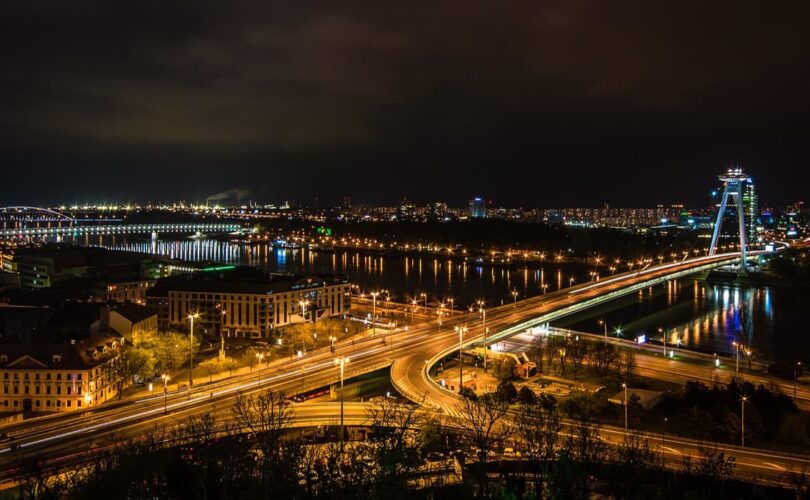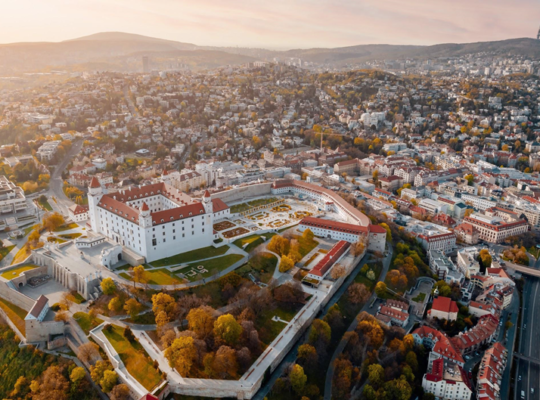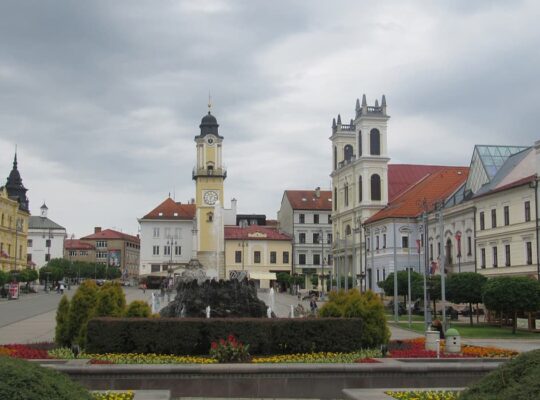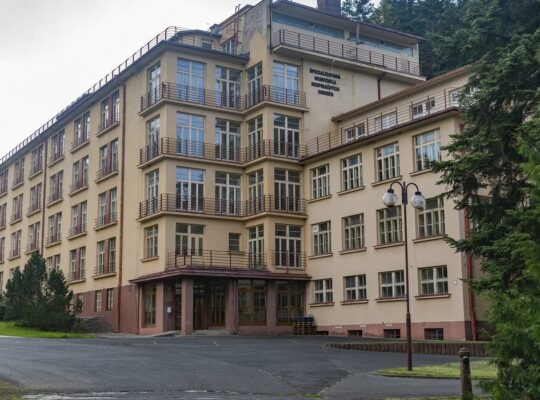Bratislava is the capital of Slovakia. It is the largest Slovak city, located in the western part of the country. The western and southern borders of the city are also the borders of the state: only 4 km separate Bratislava from Austria and 13 km from Hungary. The Danube River divides the city into two parts. The historical sites have survived only in the central districts, which can be bypassed on foot in about 2 hours. The suburbs are of no interest: there are industrial enterprises and “dormitory districts”. The historic buildings outside the historic center of the city are no longer there – they were all destroyed during World War II. The architecture is mostly Stalinist and panel-block architecture.
Main sights
The historic center of Bratislava is incredibly beautiful. It is not surprising, as Bratislava, founded more than a thousand years ago, was for 300 years the capital of the mighty Hungarian kingdom, and the coronation site of kings and emperors of the Austro-Hungarian Empire. In 1805, Napoleon signed the peace treaty with Franz I here.
On the hill at the confluence of the Morava and the Danube River rise the Gothic ruins of Devín Castle, 400 years the outpost of the Roman Empire.
The castle was the germ of the future capital of old Hungary. Its advantageous location on the banks of the Danube and under the slopes of the Little Carpathian Mountains predestined it to an outstanding task.
A city of German, Italian, Jewish and other descent began to develop with trade. Arab merchants also came here. Hungarian King Ondrej II in 1291 issued a decree confirming the rights of the inhabitants, which they previously had, but their documents were lost. He and many subsequent monarchs further enriched the inhabitants with these privileges of the city.
At the beginning of the XV century the castle was reconstructed: its walls were strengthened and a new palace was built as a representative royal residence. The castle became the true residence not only for the monarch, but the entire royal family in the XVI century after 1526, when the Turks defeated the Christian armies and captured a large part of the Hungarian state. The castle continued as a residence until the end of the 18th century.
In 1811 the castle by a fatal accident burned down and remained a ruin until 50 years of the twentieth century.
From 1563 to 1830 the city was the coronation site of the Hungarian kings. During this period, 10 kings, the reigning queen Maria Theresia and 8 royal wives were crowned in the sacred church of St. Martin. At the same time, printed news about the crowning of persons began to appear.
The first public park was opened in 1775 under the name of Sternallee on the south bank of the Danube at the site of present-day Janka Kralj Garden.
The old radnica on the Main Square in Bratislava was built in the other half of the 14th century. In the 20s of the 15th century, the building was bought by the city, and since 1868 it has been the city museum.
Today’s Presidential Palace was built in the 1860s as a summer residence for Count Anton Grassalkovich.
The first telephone appeared in the city in 1877.
The charming atmosphere of the old center is complemented by many famous historical, cultural and architectural monuments, which can be seen during a walk through the streets of Bratislava. In between are the majestic palaces, most of which were built in the 18th century during the reign of Maria Theresia (1740-1780). At that time Bratislava with its 33,000 inhabitants was the largest city in Hungary.
The intensive economic, social and cultural development of the city, and the concentration of royal court and nobility in Bratislava encouraged the construction of new palaces in the city.
As in Vienna, Bratislava saw the emergence of many town palaces within the old town and several palaces outside the outer ward. City palaces were usually built on two or three sites that arose after the demolition of the old burgher houses. They were usually four-sided buildings with an inner yard. The first floor contained the manager’s room, kitchen, storage rooms and rooms for carriage houses. The second floor was occupied by the families of the nobility, and the reception rooms were also located there. On the next floor were rooms for guests and servants.
The architecture of the palaces of the aristocrats emphasized the social status of their owners.
Very interesting are the modern sculptures of townspeople engaged in their daily business, organically blending into the urban landscape.



